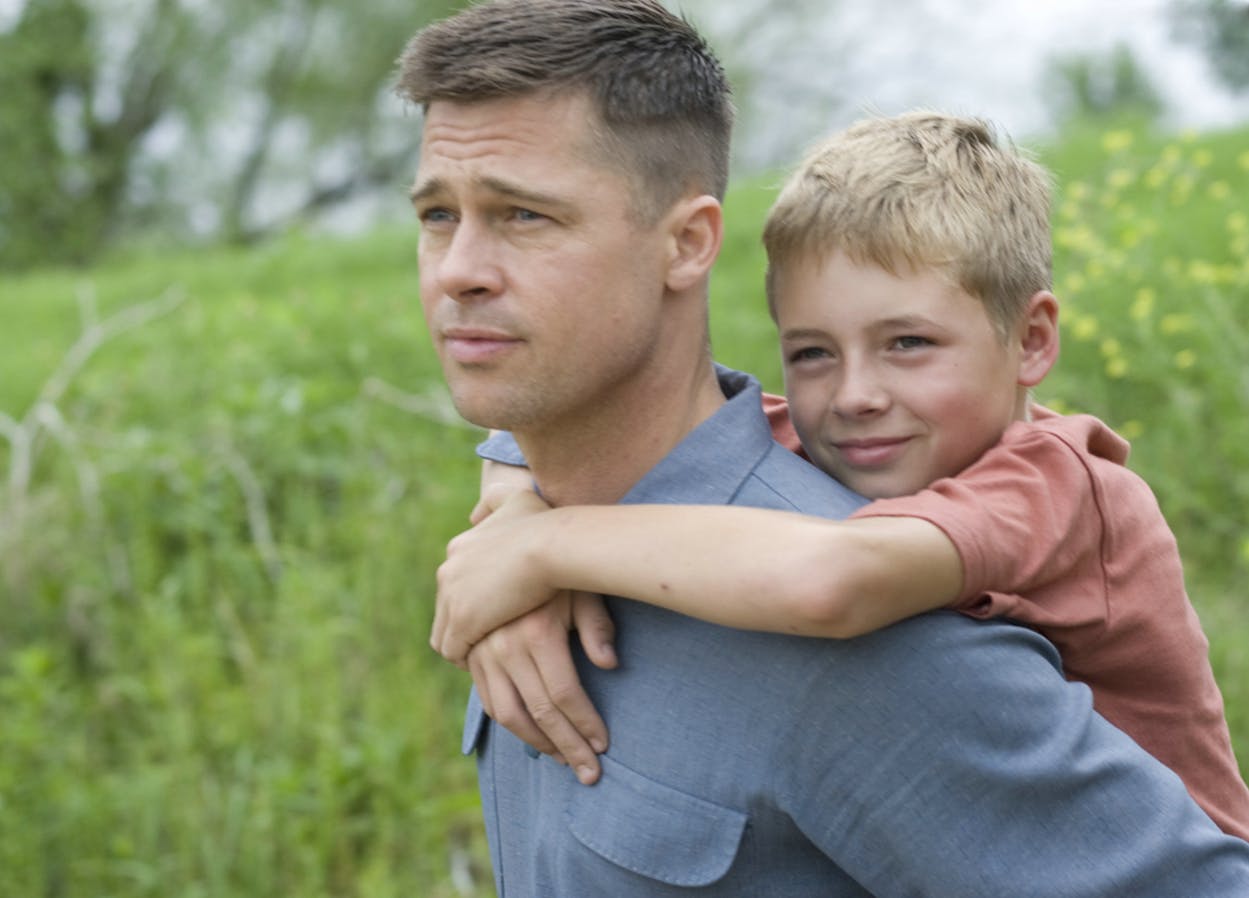Monday night at the Brooklyn Academy of Music in New York, more than a thousand people crowded into the Howard Gilman Opera House for a screening of film that most of them had already seen: The Tree of Life, Terrence Malick’s dreamy 2011 drama about three brothers’ rocky coming-of-age in fifties Waco.
The audience—largely male, mostly forty- and fifty-something, with a smattering of millennial hipster types—had paid as much as $85 to attend. The atmosphere in the hall—quietly anticipatory and oddly dignified for a movie screening—brought to mind a church service or, perhaps, a cult meeting just before the pitchers of Kool-Aid get passed around.
The selling point here: The Tree of Life was being accompanied by Wordless Music Orchestra, a 100-member band and choir that performed Alexandre Desplat’s score and the various canonical classical pieces by Berlioz, Bach and others that appear on the film’s soundtrack. (The event was repeated again on Saturday night.)
Film screenings with live musical accompaniment aren’t anything new, though it’s usually the classics that get this kind of treatment: silent movies by Charlie Chaplin or Buster Keaton, say, or Disney’s Fantasia. Wordless Music specializes in more contemporary fare (previously they’ve performed the scores of Beasts of the Southern Wild and There Will Be Blood), but the choice of The Tree of Life nonetheless felt significant: Few movies in recent decades have so quickly entered the cultural canon (just two years after its release, Roger Ebert named it one of the ten greatest films ever made), and few have attracted so ardent a following. What better way to crown Malick’s achievement than with a soaring string section and a gorgeous soprano performing Preisner’s Lacrimosa?
I hadn’t seen The Tree of Life since a press screening in May 2010, a few weeks before its commercial release, so I was eager to see how the film had aged and whether my complaints about it—chiefly, that Malick’s mythopoetic stylings mask a story that, at its heart, is almost embarrassingly banal and clichéd—might have softened. Yes and no. The live orchestral accompaniment, which sometimes overwhelms even silent movies, here melded exquisitely, lending still more grandeur to the film’s most ecstatic sections, such as the famed creation sequence, where in twenty free-associative minutes Malick visualizes the creation of the universe.
Yet something about The Tree of Life nags at me, and makes me question whether we should be so eager to see the film canonized as among our greatest. If I linger on the fact that the audience last week was largely male and middle-aged, it’s because the film—which ultimately comes to center on the tortured relationship between young Jack (Hunter McCracken, and then Sean Penn as an adult) and his angry, frustrated father (Brad Pitt)—indulges a very specific male, middle-aged anxiety: That dad never really showed affection to you, and thus you have trouble showing affection to others.
Certainly, this is as legitimate a theme as any, but watching The Tree of Life again, I was struck by the maleness of its universe, and how women are reduced to either figures of passive symbolism (Jessica Chastain, as the boys’ mother, represents “grace”), or disembodied enchantment (Jack steals an undergarment from a barely-glimpsed neighbor, unleashing a tidal wave of sexual anxiety and shame). Should any film striving for universality speak to only one gender? If, as Ebert wrote, the film strives to “encompass all of existence and view it through the prism of a few infinitesimal lives” isn’t it discomfiting that said prism should be that of white American masculinity?
In the five years since The Tree of Life, the now-72-year-old Malick, who made only three films in the first three decades of his career, has released three more films, albeit of varying degrees of unwatchability: the cotton-headed romance To the Wonder (2013), the frequently risible Hollywood drama* Knight of Cups (2014), and the stultifying nature documentary Voyage of Time (2016). Famously press-shy, he’s always been seen as one of our delicate flower artists (see also Brian Wilson), whose work allow us to believe in transcendental power of Art with a capital A, not to mention the enduring promise of an American culture that allows such oddballs to flourish. My suspicion is that the current enthusiasm for The Tree of Life has as much to do with the disappointments of his successive efforts as anything else: He poured an entire lifetime into the autobiographical masterpiece that was The Tree of Life, and thus only has so much left to give.
Or at least that’s how the myth goes—a myth that only gets emboldened when large-scale orchestras elevate mere movies to objects of worship.
Don’t get me wrong, I was glad to have the chance to revisit The Tree of Life on the big screen, and I still stand in awe of its spooky-sad evocation of childhood and memory. (The moment when the three boys encounter a disabled man while out shopping with their mother is as chilling and beautiful as anything I’ve seen on film.) But ultimately I prefer my masterpieces, and especially my Texas masterpieces, to display a little less grandiloquence and a little more dirt under their fingernails.
*Clarification: A previous version of this article referred to Knight of Cups as a rock star drama. We regret the descriptive error.






